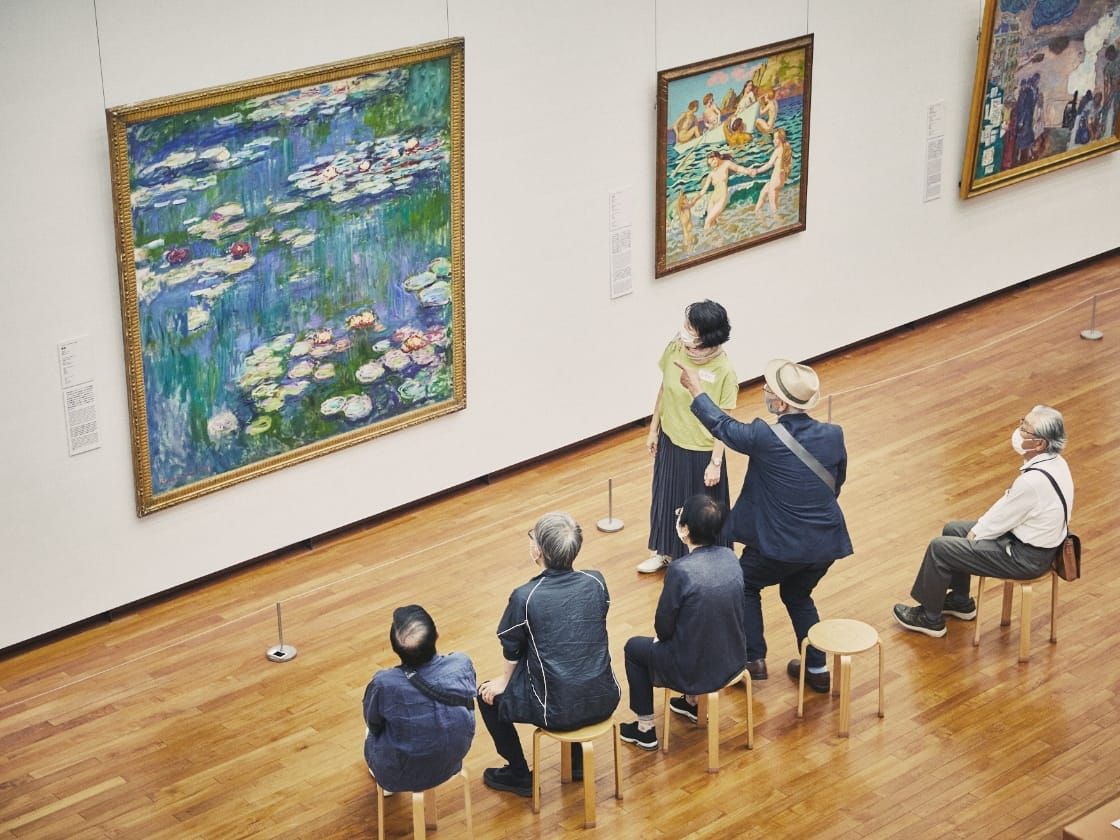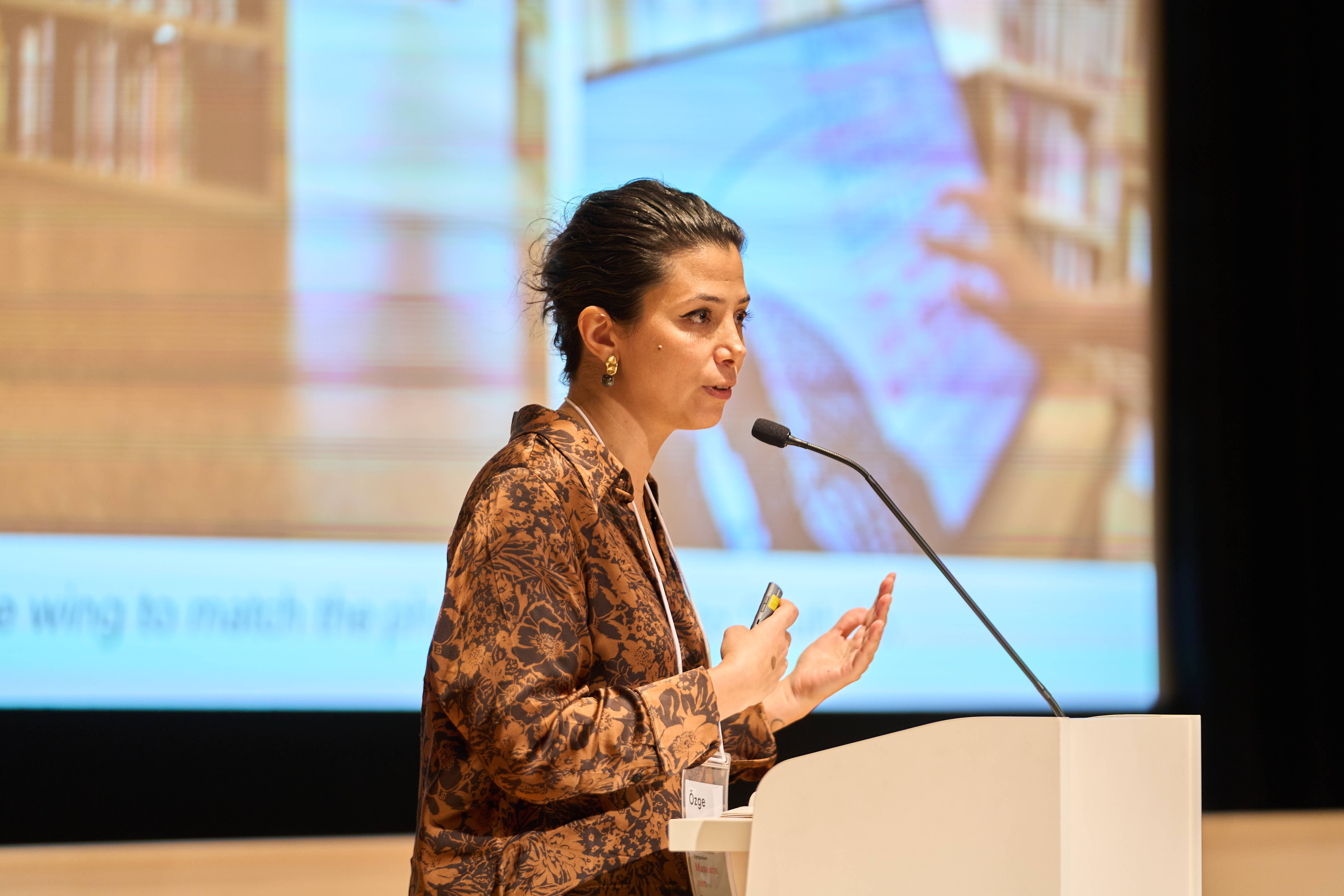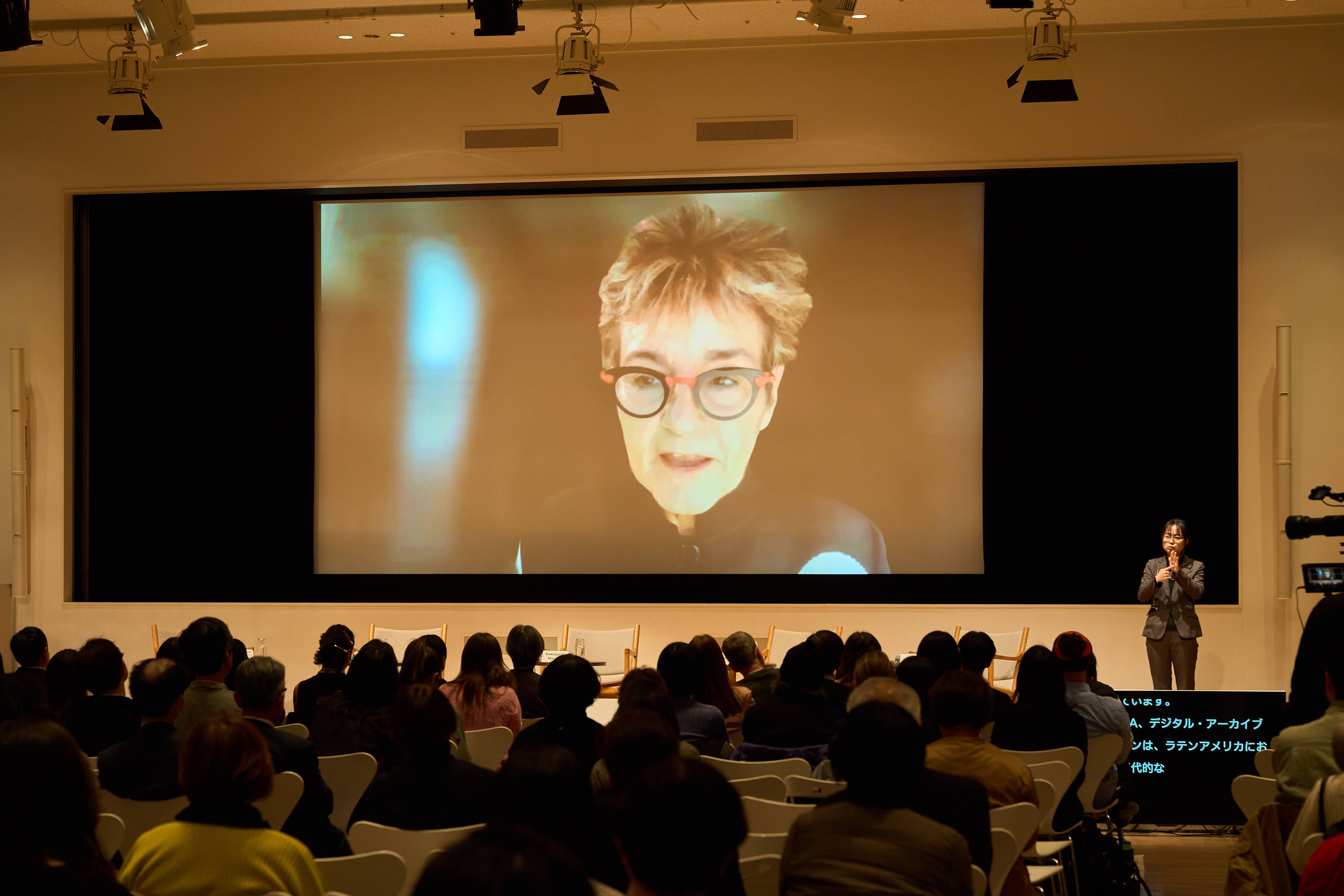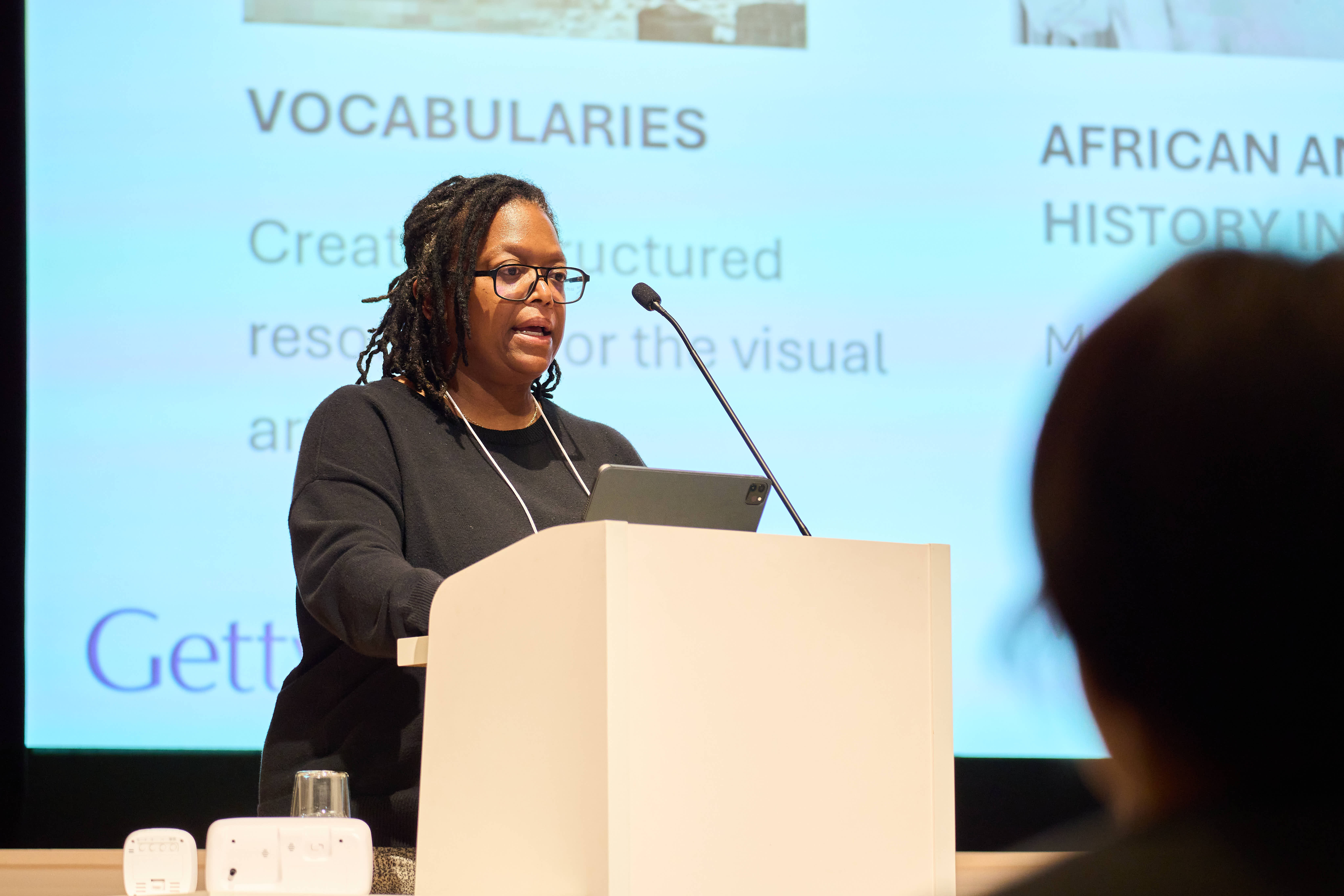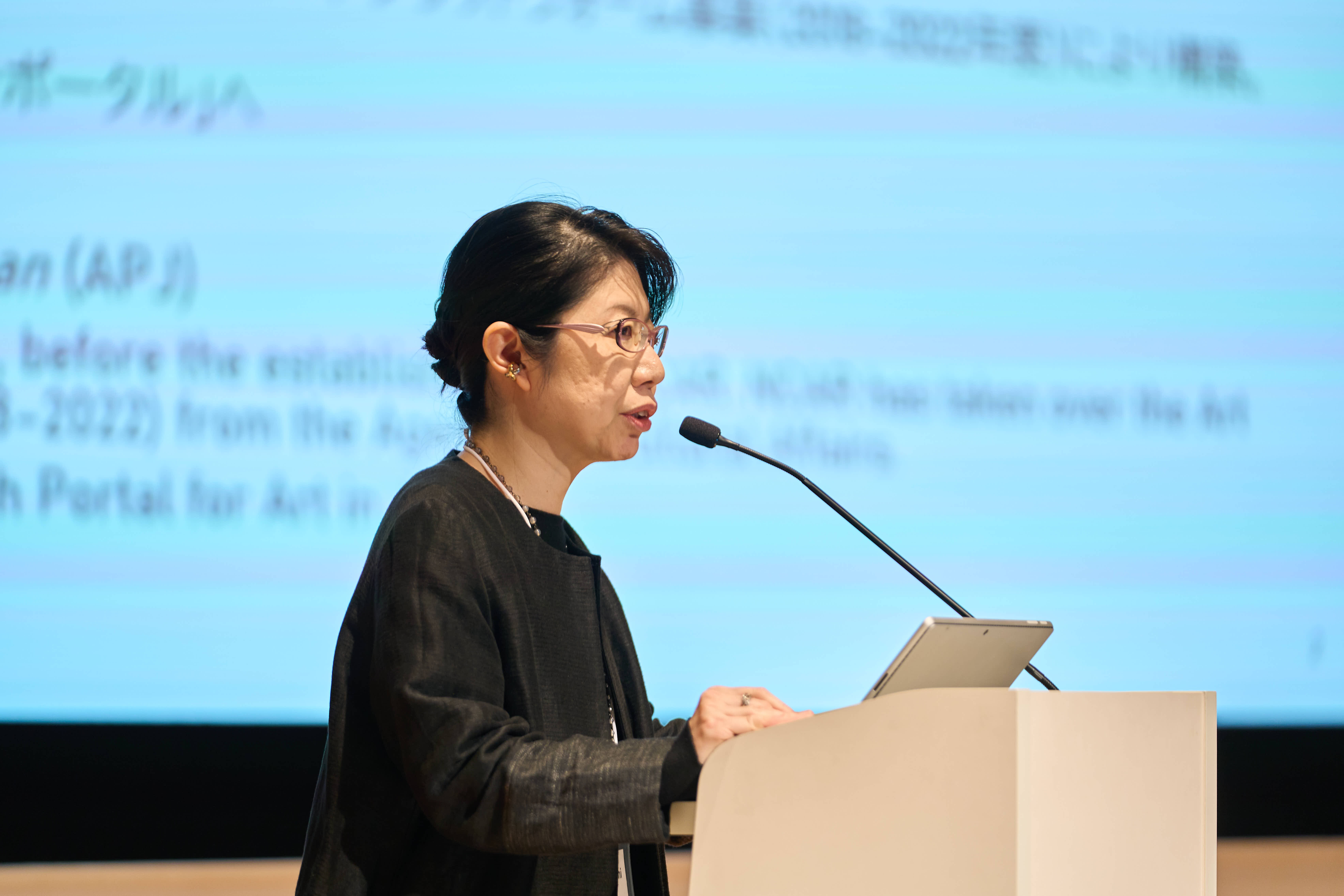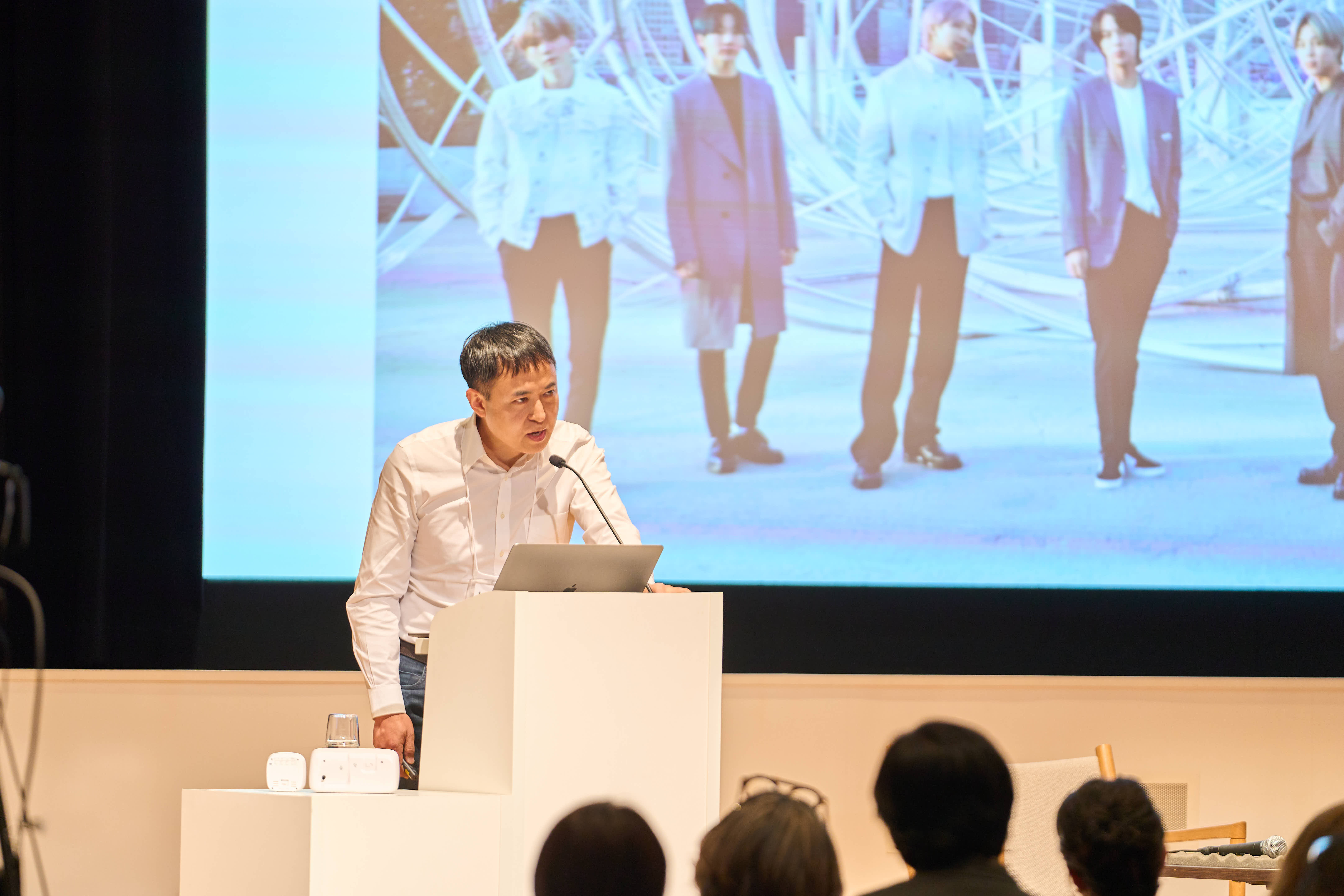[NCAR Symposium 004 Report] NCAR International Symposium &Workshop 2023 “Museums and Research: What does it mean to ‘deepen’ art?” (Hosted on March 21, 2024)
![[NCAR Symposium 004 Report] NCAR International Symposium &Workshop 2023 “Museums and Research: What does it mean to ‘deepen’ art?” (Hosted on March 21, 2024)](/en/upload/e30871cca89a7d4ecc090fbc9349b040b23d34d5.jpg)
From left: Kataoka Mami, Özge Ersoy, Kawaguchi Masako, Kara Olidge, Daehyung Lee.
Photo courtesy: Ken Sengoku (.new)
The National Center for Art Research, Japan (NCAR) hosted the “International Symposium & Workshop 2023,” from March 21 to March 23, 2024, at the National Art Center, Tokyo, aiming to create opportunities for dialogue and collaboration among art professionals both in Japan and overseas.
Under the theme of "Museums and Research: What Does it Mean to 'Deepen' Art?", 45 art professionals, including artists, curators, and researchers from around the world, participated in a three-day workshop. A symposium was held on March 22, which was open to the public following the workshop.
At the symposium, to foster a more multifaceted discussion, we invited five panelists from diverse art research centers around the world that differ in the scale of operation, structure, target communities, and regions (see the list below). They introduced the distinctive characteristics and unique initiatives of their respective organizations. During the panel discussion, panelists shared the challenges faced by each organization and engaged in a broad discussion on how to leverage each other's strengths, utilize research resources effectively, and reciprocate collaboration, while incorporating practical examples from their professional experiences. This report presents the main topics discussed during the symposium.
What to research and whom to archive for?
- Case Study of Asian Art Archive
- Case Study of The Museum of Fine Arts, Huston, ICAA
Tradition and Innovation: As a Research Institution in the 21st Century
- Case Study of the Getty Research Institute
Initiatives in Japan - Sharing Japan’s Information Overseas
- Case Study of the National Center for Art Research, Japan
Potential Partnerships
- Case Study of Hzone: Collaboration with Enterprises
Museums and Research-What Does it Mean to "Deepen" Art?
At the beginning of the symposium, Director Kataoka Mami introduced the activities and achievements of NCAR, which marked its first anniversary since its establishment in March 2023. Kataoka also discussed recent global art trends and the background of organizing the symposium. “During the post-war period, the museum administration system in Japan had been developed relatively earlier than those in other regions of Asia. Since the 1990s, with the dynamic shifts in art trends around the globe, various fields in Asia have been experienced rapid increase in number of establishments of modern and contemporary art museums, international art exhibitions, and art fairs. In recent years, diverse art expressions, including those from previously underrepresented regions, genders and art practices and media, have been gaining more attention worldwide.” She emphasized, “amid these changes, museums in Japan are also expected to adopt new artistic and managerial models of the 21st-century. We seem to be in an ‘age of research,’ where there is a need to revisit and research aspects of arts that have been overlooked throughout history.” Raising this issue, she expressed her expectations to discuss ways to ‘deepen’ art from multiple perspectives through examining practices around the world at this symposium.
What to research and whom to archive for?
Case Study of Asian Art Archive
The Asian Art Archive in Hong Kong (AAA) was founded in 2000 with a strong sense of purpose to directly document and collect materials of contemporary art across Asia and make the information more publicly available on their own efforts. This was initiated by Claire Hsu, one of its founders, who felt an urgent need to do this after struggling to find materials on Chinese contemporary art while pursuing her Master's degree. Currently, AAA operates with about 30 employees, including curators, researchers, editors, and technicians, and functions as a non-profit organization with a focus on art research. During the last two decades since its establishment, AAA has been collecting over 50,000 secondary resources for the library collections and has released over 76,000 digitized primary resources online. In the library, it holds exhibitions regularly based on archival research, sensory performances and workshops through collaborating with partnered artists and communities. By documenting new insights gained through the process of archival research and exhibitions, AAA attempts to foster an active circulation of archiving and utilization of research resources. Senior Curator Özge Ersoy emphasized that AAA, where activities are always centered around collection artists, continuously questions and examines their creation process and presentation of the artworks, so that AAA’s research and archival activities could help understand artists’ thoughts and the history of their creative activities narratively.
Case Study of The Museum of Fine Arts, Huston, ICAA
Located in Houston, where the population of 2.4 million (as of March 2024) is composed of 45% Latino (including 63% of the student population), the Museum of Fine Arts, Huston's ICAA* began pioneering efforts in 2001 to take an initiative** to form a collection specialized on Latin American art and extensively archive relevant materials. The distinctive feature of this initiative, as ICAA Director Mari Carmen Ramírez explained, was that the project was not solely initiated by the ICAA itself but was formed by a continental network connecting 20 cities across North, Central, and South America, and cooperated with 22 special research teams, and it has been continued for more than 20 years. The ICAA currently manages over 10,000 primary sources of Latin American art and is advancing a large-scale digital archiving project with the aim of providing them with free online access. The museum regularly exhibits their collections with relevant archives, and actively promotes new narratives and the reconstruction of theories of Latin American art through educational programs in collaboration with local universities. This initiative, Ramírez stated, helps recontextualize and revitalize the cultural value of Latin American art, which had been historically marginalized, and supports to sustain cultural identity of the community.
Tradition and Innovation: As a Research Institution in the 21st Century
Case Study of the Getty Research Institute
The Getty Research Institute (GRI), based in Los Angeles, USA, was established with affluent funds from the J.P. Getty Trust, which was founded by the American industrialist, J.P. Getty, in 1953. The GRI opened in 1954 as a specialized organization dedicated to researching and preserving Western-art-centered collections and archives of the Getty Museum. Nowadays, extensive archives including approximately 100,000 valuable materials are managed by a total of 117 employees. The GRI also assigns a specialized team to manage a large-scale database, which plays a significant role for art researchers on the globe, and ensures it remains up-to-date. In addition to initiatives from running a research library to holding exhibitions, the GRI offers grants and residential research program, which has accepted 1,800 scholars from over 59 countries since its establishment in 1985, said Kara Olidge, the Associate Director of GRI. In recent years, the GRI has been expected to transform its traditional management policies and operation to be more transparent and updated to embrace diversity and inclusion. Under the new leadership since 2020, the GRI has raised sustainability and DEAI** as core operational principles and has undertaken thorough measures to restructure the organization and programs, from reviewing facility services to changing the mindset of staff involved, which leads to a substantial change for the long term both internally and externally.
Initiatives in Japan - Sharing Japan’s Information Overseas
Case Study of the National Center for Art Research, Japan
As one of the initiatives led by Research Resources Group at the National Center for Art Research, the research portal “Art Platform Japan” dedicated to informing on Japanese modern and contemporary art was introduced. Other initiatives presented were the translation project of important Japanese literatures and their online publication, background stories and main features about "Japanese Museum Collections Search ‘SHŪZŌ’,” which disseminates information of Japanese museum collections, and the "Dictionary of Artists in Japan,” which shares profiles and exhibition information of Japanese artists both available in Japanese and English. In Japan, many art institutions have not yet been able to fully digitize and publish their collection information due to the lack of specialized personnel or insufficient funding. Based on this context, these initiatives are pioneering and significant for meticulously and comprehensively disseminating information on Japan's modern and contemporary art and museum collections both domestically and internationally. Moving forward, it is crucial to continue improving the data infrastructure and dissemination platform, and to expand the amount of publishable data available for research, while keeping an eye on technological advancements and domestic and international demand. The potential for future broad-based collaboration to utilize the research resources with a global perspective was also suggested during the session.
Potential Partnerships
Case Study of Hzone: Collaboration with Enterprises
In recent years, Korea’s presence on the international art scene has been steadily increasing. Hzone, based in Seoul, Korea, is an organization that develops various international projects through art consulting. Lee Daehyung, the founder, and director of Hzone, emphasized the importance of collaboration across boundaries while reading trends of the times, based on an analysis of the trends in arts projects in the international community in the 21st century. Daehyung highlighted successful examples such as the “CONNECT, BTS” project in 2020, which connected five cities worldwide through music and contemporary art, and the “Hyundai Tate Research Centre: Transnational” partnership made between Tate Modern and Hyundai Motors during his tenure there. He also addressed the potential for museums to approach global issues from an artistic perspective, by creatively realizing partnerships and social practices that are not restricted by existing frameworks, with partners that have different strengths, such as enterprises and governmental entities.
Summary
In the discussion, panelists addressed issues related to personnel and capacity faced by each organization while sharing their thoughts on the ideal way of establishing sustainable partnerships by leveraging each other’s specialized fields. For instance, AAA and GRI have explored partnerships respectively with local museums and universities, where the partner institutions take charge of preserving and managing physical materials, while AAA and GRI handle the digitization and online data publication of these materials. This mutually complementary practice allows both parties to utilize their strengths effectively. Such collaboration in the joint management and online publication of archival materials is believed to maximize the effective use of limited research resources and enable a larger number of users to access information. Furthermore, it was also discussed that such partnerships should be mutually beneficial, leading not only to the exchange of expertise and technology, but also to the realization of their respective missions and the public interest.
Once Again, What Does It Mean to “Deepen” Art?
In this symposium, through practical examples from various research organizations around the world, proactive discussions were held on research and archiving policies and methods, methods for disclosing and utilizing collected materials, and ways of progressive collaboration. Each organization is exploring ways to further utilize their research resources that are in line with the times and is putting them into practice on a daily basis.
Finally, Director Kataoka closed the session by emphasizing that, through the discussions held so far, it is crucial to focus on the meticulous and diligent work done in areas such as research and archiving, which are not as visible as numerical indicators like exhibition attendance or fundraising amounts. Finally, she concluded by stating that it is also important to pay attention to how these diligent activities “deepen” the museum's activities, and to communicate such efforts to the outside world, so that they will lead to the development of museum’s overall activities.
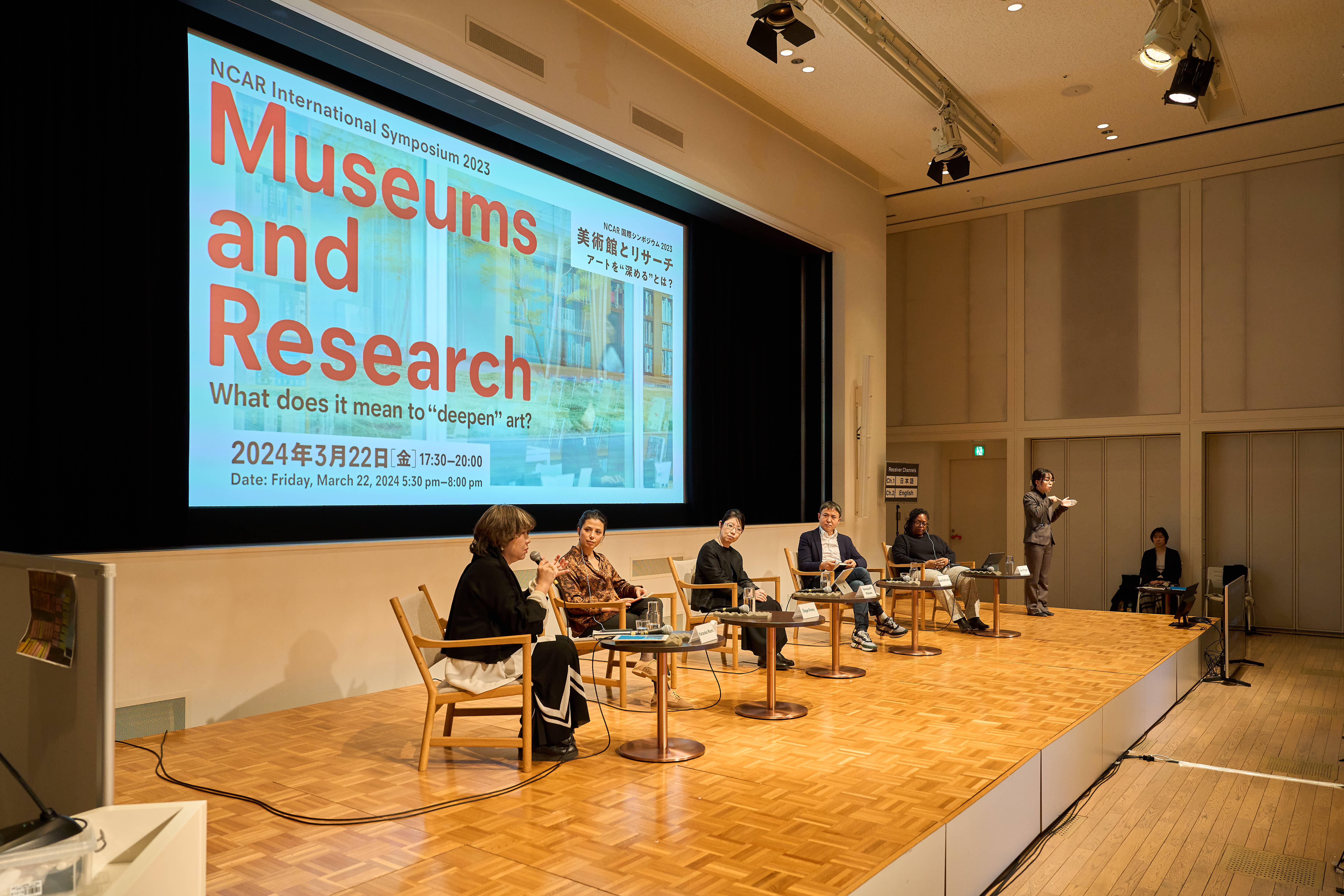
Discussion at the symposium
Photo courtesy: Sengoku Ken (.new)
The National Center for Art Research aims to enhance the international reputations of Japanese contemporary art. We will continue to introduce diverse practices from museums and research organizations worldwide, create opportunities for dialogue, and strive to contribute to the promotion of museum activities throughout Japan.
Notes
* ICAA=International Center for the Arts of the Americas
** ”Documents of Latin American Arts and Latino Arts” is an archival project initiated by ICAA in 2001 with the goal of documenting and publishing records of Latin American arts and Latino arts online.
*** DEAI=Diversity, Equity, Accessibility, Inclusion. DEAI is an acronym formed from the initial letters of Diversity, Equity, Accessibility, and Inclusion.
Outline of the Symposium:
Date: 5:30 pm - 8:00 pm, Friday, March 22, 2024
Organized by: National Center for Art Research
Venue: 3rd Floor, Auditorium, The National Art Center, Tokyo (7-22-2, Roppongi, Minato-ku, Tokyo)
Program:
Opening Speech: Kataoka Mami (Director, National Center for Art Research)
Panel presentation:
Özge Ersoy (Senior Curator, Asia Art Archive)
Kawaguchi Masako (Head, Research Resources Group, National Center for Art Research)
Daehyung Lee (Founder and Director, Hzone)
Kara Olidge (Associate Director, Getty Research Institute)
Mari Carmen Ramírez (Curator, Latin American Art and Director, ICAA, The Museum of Fine Arts, Houston)
Panel discussion:
Moderator:Kataoka Mami (Director, National Center for Art Research)
Q&A
Closing
Click here to watch the archive movie of the symposium:
https://youtu.be/Fpjl_RMmMG8


